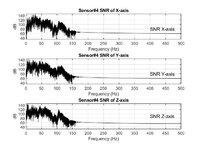Yada
Newbie
Dear all,
I wonder why the SNR is high in the lower frequency.
I have simulated the SNR from 4 Sensor's data set. I applied Low pass filter before calculating the SNR.
All the results show that SNR level is high in the lower frequency and at a certain frequency, the SNR becomes almost a constant value.
I think the reason is because of Low pass filter. However, I would like to know if there any other reason behind?
Can someone clear this up for me?
Thank you very much
I wonder why the SNR is high in the lower frequency.
I have simulated the SNR from 4 Sensor's data set. I applied Low pass filter before calculating the SNR.
All the results show that SNR level is high in the lower frequency and at a certain frequency, the SNR becomes almost a constant value.
I think the reason is because of Low pass filter. However, I would like to know if there any other reason behind?
Can someone clear this up for me?
Thank you very much
